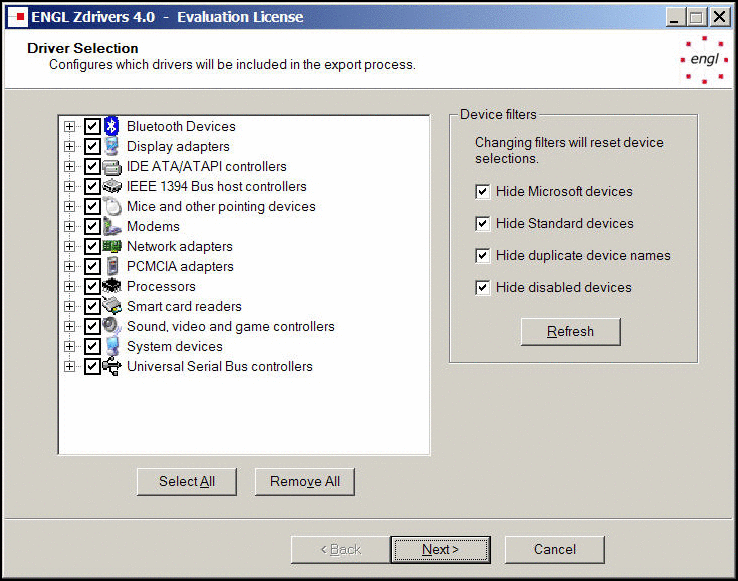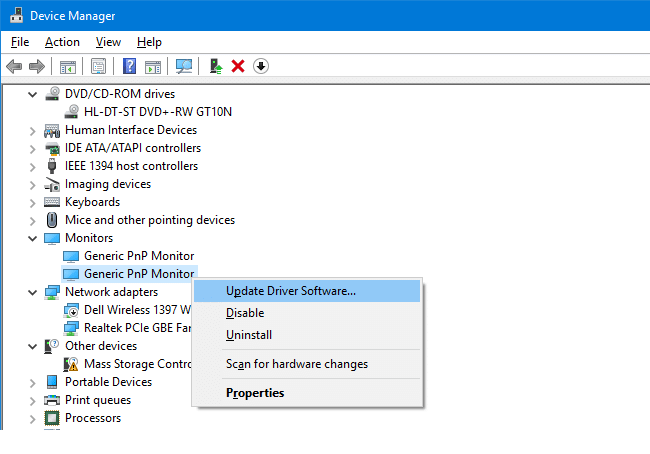To find the latest driver for your computer we recommend running our Free Driver Scan. Texas Instruments 1394 OHCI Compliant Host Controller - Driver Download. Vendor. The legacy 1394 bus driver (available in earlier versions of Windows) includes multiple device drivers that were implemented by using the Windows Driver Model (WDM) in a port/miniport configuration. The 1394ohci.sys bus driver replaces the legacy port driver, 1394bus.sys, and the primary miniport driver. I have an Inspiron 8000 running Windows XP Pro. In my Devioce Manager, I have a yellow question mark next my 1394 Adapter. I understand this is a Texas Instruments Product, and is my firewire port. While installing (and reinstalling) Windows ultimately searches the internet for a driver and retruns. Windows installed 'Texas Instrument 1394 OHCI Compliant Controller', driver version 10.0.15063.0 with a date of 6/21/2006 which sounds like it installed the 'Legacy' driver. However, I can't find any reference to this driver and whether it is the 'Legacy' driver or not.
- 1394 Driver Legacy
- Ieee 1394 Driver Windows 10
- 1394 Legacy Driver Install
- Firewire 1394 Legacy Driver
- Download Firewire 1394 Driver Windows 7
There are three kinds of WDM drivers: bus drivers, function drivers, and filter drivers.
1394 Driver Legacy
- A bus driver drives an individual I/O bus device and provides per-slot functionality that is device-independent. Bus drivers also detect and report child devices that are connected to the bus.
- A function driver drives an individual device.
- A filter driver filters I/O requests for a device, a class of devices, or a bus.
In this context, a bus is any device to which other physical, logical, or virtual devices are attached; a bus includes traditional buses such as SCSI and PCI, as well as parallel ports, serial ports, and i8042 ports.
It is important for driver developers to understand the different kinds of WDM drivers and to know which kind of driver they are writing. For example, whether a driver handles each Plug and Play IRP and how to handle such IRPs depends on what kind of driver is being written (bus driver, function driver, or filter driver).
The following figure shows the relationship between the bus driver, function driver, and filter drivers for a device.
Each device typically has a bus driver for the parent I/O bus, a function driver for the device, and zero or more filter drivers for the device. A driver design that requires many filter drivers does not yield optimal performance.

Ieee 1394 Driver Windows 10
The drivers in the previous figure are the following:
A bus driver services a bus controller, adapter, or bridge. Bus drivers are required drivers; there is one bus driver for each type of bus on a machine. Microsoft provides bus drivers for most common buses. IHVs and OEMs can provide other bus drivers.
A bus filter driver typically adds value to a bus and is supplied by Microsoft or a system OEM. There can be any number of bus filter drivers for a bus.
Lower-level filter drivers typically modify the behavior of device hardware. They are optional and are typically supplied by IHVs. There can be any number of lower-level filter drivers for a device.
A function driver is the main driver for a device. A function driver is typically written by the device vendor and is required (unless the device is being used in raw mode).
Upper-level filter drivers typically provide added-value features for a device. They are optional and are typically provided by IHVs.
The following topics describe the three general types of WDM drivers—bus drivers, function drivers, filter drivers—in detail. Also included is an example of WDM driver layering that uses sample USB drivers.

In this section
If the 1394 drivers in Windows XP have become corrupted, then they can be restored using the steps provided below.Note:
The main files that the card should use are:
1394.INF


 1394BUS.SYS
1394BUS.SYSOHCI1394.SYS
1394 Legacy Driver Install
Firewire 1394 Legacy Driver
- Open up the Device Manager and uninstall the 'OHCI Compliant IEEE 1394 Host Controller' listing – may also be listed as a Texas Instruments or Standard OHCI Compliant IEEE1394 Host Controller
- Minimize the Device Manager and then insert your Windows XP CD-ROM
- Go from the Start menu up to run and type 'CMD' and then press enter. This should bring up a DOS shell
- Change to the drive letter of the CD drive (press 'd:' if your CD drive is drive letter D)
- Next change to the 'i386' directory -- 'cd i386 '
- From this directory type:
expand 1394.in_ c:windowsinf
This should restore the 'INF' (information) file for the FireConnect board that should be used - Now open the Device Manager back up and highlight the 'Computer' listing at the top of the category list. Select the 'Action' pull-down menu and choose 'Scan for hardware changes'. This should reinstall the FireConnect adapter
- Restart the system and test by connecting your Firewire device